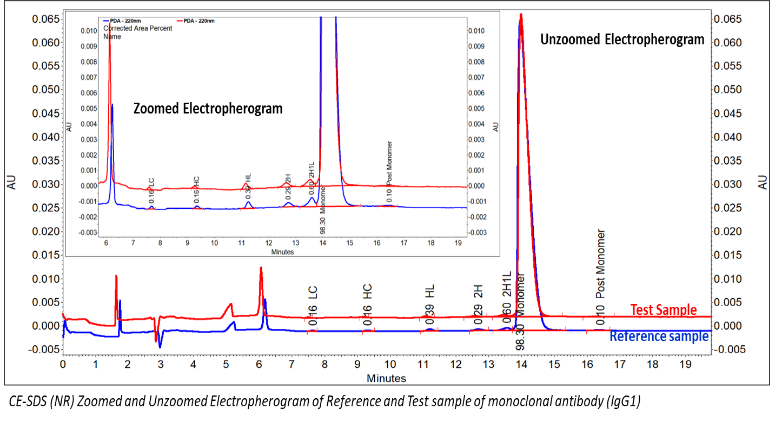Electrophoresis is a widely used technique for separating biological molecules (proteins, nucleic acids, etc.) based on their size, charge, and other properties. Different electrophoresis methods are employed for various applications.
CE-SDS (Capillary Electrophoresis-Sodium Dodecyl Sulfate) is a specialized technique that combines capillary electrophoresis (CE) with Sodium Dodecyl Sulfate (SDS), a detergent that denatures proteins. CE techniques are widely used for the separation, analysis, and quantification of biological molecules based on their charge, size, and other physical properties.
CE-SDS (R) is an essential method for the characterization and quality control of monoclonal antibodies (mAbs). By denaturing the protein and reducing disulfide bonds, it enables the separation of subunits, such as light and heavy chains, and the detection of degradation products, fragments, and aggregates.
Capillary Isoelectric Focusing (cIEF) is a crucial analytical tool for the detailed characterization of charge variants and the precise determination of pI values in therapeutic proteins, especially monoclonal antibodies (mAbs).
The above all product characteristics are importance and mandatory for the monitoring of protein degradation, impurities, fragmentation and charge which are critical for ensuring the quality, stability, and efficacy.
Aragen provides a highly sensitive, robust and quicker Capillary Electrophoresis workflows for accurate estimation of low molecular wight species, charge heterogeneity and determination of the PI value by using various detectors like, DAD, UV & FID.



